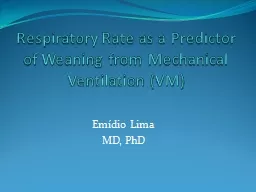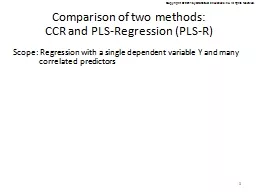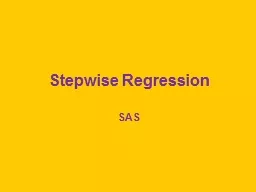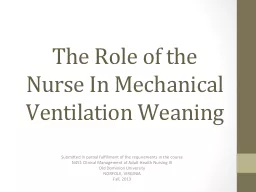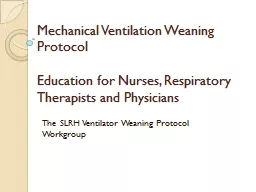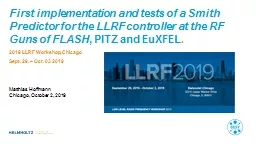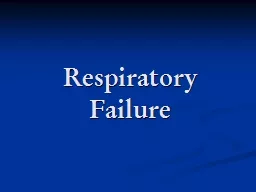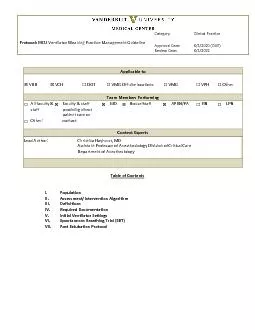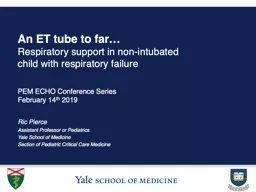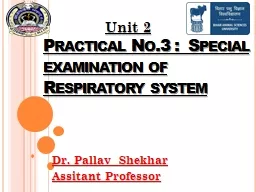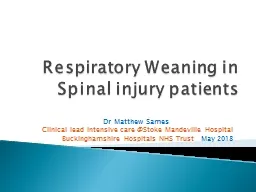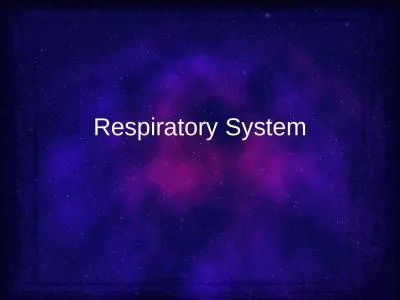PPT-Respiratory Rate as a Predictor of Weaning from Mechanical
Author : stefany-barnette | Published Date : 2016-08-11
Emídio Lima MD PhD Mortality Increases with the Duration of Mechanical Ventilation and Weaning Failure Weaning Failure The Average Rate is 30 Increases Mortality
Presentation Embed Code
Download Presentation
Download Presentation The PPT/PDF document "Respiratory Rate as a Predictor of Weani..." is the property of its rightful owner. Permission is granted to download and print the materials on this website for personal, non-commercial use only, and to display it on your personal computer provided you do not modify the materials and that you retain all copyright notices contained in the materials. By downloading content from our website, you accept the terms of this agreement.
Respiratory Rate as a Predictor of Weaning from Mechanical: Transcript
Download Rules Of Document
"Respiratory Rate as a Predictor of Weaning from Mechanical"The content belongs to its owner. You may download and print it for personal use, without modification, and keep all copyright notices. By downloading, you agree to these terms.
Related Documents

